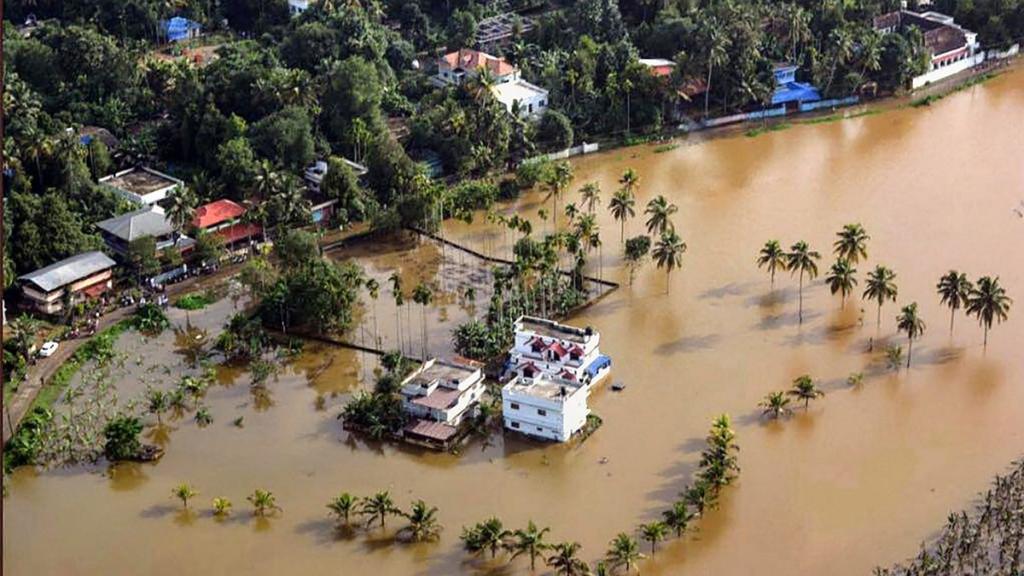
Beyond the Temperature Rise: The Bigger Picture of Climate Change
“Climate change.” A phrase so overexposed that it risks becoming desensitizing, plastered in our collective consciousness. Frames of clichéd presentations, like polar bears on shrinking icebergs, the melting glaciers, and doomsday headlines—these imagery and words, meant to ignite action, have instead bred apathy.
This constant overemphasis leaves the very solutionist backing away, delegating the responsibility of saving the planet to those with more to offer. And yet, the climate crisis persists, faintly stapled to the back of our minds. It’s time to reframe the narrative—not with ignorance-prompting fear, but with actionable, meaningful hope.
Climate change, defined by long-term shifts in temperature and weather patterns, is escalating at an unprecedented rate. Once driven by natural phenomena like volcanic eruptions or solar activity, the global crisis has experienced a radical change since the 19th century—often attributed to the Industrial Revolution—with human activities acting as primary catalysts, significantly amplifying its pace.
The burning of fossil fuels releases greenhouse gases like the notoriously-dominant carbon dioxide and methane, which act as an insulating layer enveloping the Earth. Upon sunlight entering the atmosphere, these gases prevent heat, in the form of infrared, from escaping back into space, causing the Earth’s temperature to rise (United Nations).
This, otherwise known as the “greenhouse effect,” mimics that of a greenhouse structure, trapping sunlight which is thereby converted into thermal energy, creating a controlled environment (Telefónica).
Climate might feel like a distant issue, but it is the driving force steering humanity toward its greatest threats, jeopardizing tangible environments and every facet of interconnected human and environmental systems, and reversing decades of immense progress in global health, economic stability, and social resilience; it dictates nearly every aspect of life—even the food served on our plate. But what’s wreaking havoc on us humans is none other than what we’ve unleashed upon ourselves.
From driving gas-guzzling cars to heating homes with coal, our everyday, unsustainable practices like deforestation and agricultural and industrial processes exacerbate the greenhouse effect, with excessive accumulation of emissions—water vapour, carbon dioxide, nitrous oxide, methane and ozone—pushing it beyond the tipping point of ecological balance. A process vital to maintaining the delicate balance of suitable temperatures needed to sustain life and supply liquid water, higher concentrations of greenhouse gases trap excessive heat in the atmosphere, radiating from the planet’s surface—an action that feels like putting salt on an already festering wound.
Accordingly, between January and September of 2024, the Earth’s surface temperature has climbed by an alarming 1.54°C (with an uncertainty of 0.13°C) since before the Industrial Revolution, surpassing any warmth seen in the past 100,000 years. This rise in global temperature of 1.5°C is regarded by scientists as a critical threshold; exceeding such a pace could trigger an insurmountable cascade of climate impacts (World Meteorological Organization).
Crossing this critical threshold risks the planet sliding down a slippery slope of climate disruptions, threatening the very foundations of a livable environment. Already teetering 0.04°C beyond the boundary, current policies envision us on a trajectory toward a staggering 3.1°C of warming by the end of the 21st century.
This stark rise, fueled by industrialization and human activity, marks a turning point—possibly even irreversible—in our planet’s history, with the last decade shattering records, each breaking the benchmarks set by the one before it. And while many discussions bounced back-and-forth regarding climate change focus solely on rising temperatures, the truth is that warming is just the tip of the iceberg.
The Earth operates as a complex, interconnected system, where shifts in one area ripple through others, from which temperature is merely the opening chapter of a much larger narrative. What is seen in one corner of the planet doesn’t stay there; it embodies the butterfly effect, where something so trivial can lead to heavy consequences, reshaping realities in ways that may even end up tainting yours. Recognizing personal footprints in the climate crisis is the first and foremost step toward reversing the damage.
A carbon footprint is a measure of your impact on the planet, determined by the total volume of greenhouse gases, expressed in carbon dioxide equivalency, emitted through your daily choices—everything, to as seemingly insignificant as a quick search on ChatGPT, or a mere bus ride to school. Hence, a bigger footprint yields a heavier burden on the environment. According to Conservation International, the average person worldwide emits 4.8 metric tons of carbon dioxide each year.
But in the United States, a leader in per capita emissions, that number soars to a staggering 16.2 metric tons; this outpaces countries like India and China, at 1.84 tons and 6.98 tons, respectively, with larger populations. This disparity highlights the broader global imbalance, underscoring the need for greater accountability, particularly from wealthier nations, in cutting down on one’s footprint—a moral and practical imperative of collective action to mitigate environmental impact.
Nearly 90% of carbon dioxide released by human beings can be traced back to one source: the burning of fossil fuels like coal, oil, and natural gas. The rest is attributed to deforestation and shifts in land purposes (9%) and certain industrial activities like cement manufacturing (4%). Responsible for a staggering 87% of global CO₂ output, as reported by the International Energy Agency, the combustion of coal, oil, and natural gas produces thermal or electric energy, rendered for a variety of purposes including power, transportation, and industry. But this vital process also unleashes carbon dioxide as a byproduct.
Coal, the most carbon-intensive fuel, accounts for 43% of emissions from burning fossil fuels, followed by oil at 36% and natural gas at 20%. This combustion encourages and catalyzes manufacturing and industry produce emissions that require the energy from fossil fuels to source goods like cement, steel, electronics, plastics, and clothing. When viewed through a wider lens, the carbon footprint of these commodities stretches from their creation to their final disposal. The machinery that brings them to life often runs on coal, oil, or gas, while materials like plastics are crafted from fossil fuel-derived chemicals, embedding carbon at every stage of their existence, from creation to disposal.
This multifaceted use of fossil fuels branches out into infinite, everyday actions that play a significant role in the climate crisis. Transportation, particularly road vehicles, is a major emitter of carbon dioxide, while food production contributes through deforestation, livestock digestion, fertilizer use, and energy-intensive farming practices. Residential and commercial buildings, which greedily consume over half of global electricity, remain tethered to fossil fuels for heating and cooling, fueling a rise in emissions.
Meanwhile, our satiated consumption of goods—clothing, electronics, and waste—feeds our already-concentrated atmosphere, amplifying our collective carbon footprint (United Nations). What may appear to be trivial or insignificant in our daily lives, whether that is one’s spontaneous choice to use reusable water bottles, or switching off lights, ripples out with far-reaching reactions, gradually upsetting the balance of environmental equilibrium. These small actions, when compounded, accumulate into what shapes the betterment of our planet, often in ways we fail to recognize beforehand.
As emissions rise, so do global temperatures, marking the past decade as the warmest on record. Heatwaves and intensifying wildfires have become increasingly ubiquitous, with the Arctic warming at a rate twice the global average.
This sudden spike in temperature not only fuels destructure storms—hurricanes, typhoons, and cyclones—but also exacerbates flooding and extreme rainfall, inflicting catastrophic damage on communities and their wellbeing. Water scarcity is an emerging concern as a growing number of droughts spread, leaving agricultural systems susceptible to desertification.
The oceans, which absorb most of the heat from climate change, are swelling as they warm, raising sea levels and threatening coastal areas with a surplus of economic and cultural implications. Rising ocean acidity, driven by carbon dioxide absorption, jeopardizes biodiversity and ecological resilience, particularly for marine life and coral reefs.
These delicate ecosystems are extremely susceptible to changes in temperature, where an additional 1.5°C leads to severe repercussions of the death of 70% to 90% of the organism’s population, according to the United Nations. With biodiversity loss now occurring at a rate 1,000 times greater than ever recorded, ecosystems face an unprecedented strain, disrupting the intricate and vital relationships that sustain life on Earth.
For these reasons, climate change is an infamous variable of humanitarian crisis, aggravating hunger, health risks, and displacement. Extreme weather and shifts in climate disrupt food systems, alongside heat stress, acidifying ocean, and declining crop yields, leaving social and economic systems, as well as agricultural productivity, at risk (United Nations).
And ignorance only perpetuates the marginalization of the world’s most vulnerable, underserved nations, forcing them to dig deeper into their nearly-hollow pockets as malnutrition, hunger, and displacement only deepen. These repercussions take the lives of millions, entrenching cycles of poverty and vulnerability.
Addressing the climate crisis demands a fundamental shift—a transition from the destructive, dilapidating patterns of the past to a future rooted in sustainability and life. At the core of this shift lies the net zero coalition, envisioning a balance in the scales by reducing greenhouse gas emissions to negligible amounts to which they can be “absorbed and durably stored by nature” and, moreover, offset through carbon removal strategies, to near-zero levels (United Nations).
This calls for two major parts, where emissions stemming from human activities must be cut down to as close as possible to net zero, from which the residual carbon will be counterbalanced through carbon removal, which can be achieved through nature-based solution such as reforestation or technologies like direct air capture and storage (DACS), extracting excess from the atmosphere.
Under the Paris Agreement, nations pledged to cap warming below 2°C, aiming for 1.5°C, indicating the need to reduce emissions by 45%. Yet, with the planet already simmering at 1.1°C, the mounting toll, from melting ice caps to the agonizing droughts, underscores the pressing urgency to halt further escalation, specifically by 2030. Success in this endeavor will determine whether the world can reach net zero by 2050 and avoid catastrophic climate outcomes (World Resources Institute).
It is critical that nations with high emissions, particularly the wealthy, act with haste, given their responsibility for their immense carbon footprint and greater capacity to lead. This timeline, however, varies for carbon dioxide versus greenhouse gases like methane and nitrous oxide, deemed much more strenuous to eliminate. Despite the significant progress of climate action, it is much too slow to keep pace with the overarching goal of keeping global temperature rise below 1.5°C.
Rapid change is most necessary, stemming from neither national nor global systems, but from a local or even personal level. It is the individual choices and community actions that coalesce into a transformative butterfly effect, capable of redefining the trajectory of our planet’s future. By the account of the World Resources Institute, 98%-100% of electricity must come from zero-carbon sources by 2050, while transport, food systems, and land use demand swift transformation.
Cutting coal reliance must accelerate sixfold, and deforestation must halt with reforestation efforts doubling by 2030. Equally vital are boosting energy efficiency, shifting diets, and tackling food waste—changes that hold immense potential to slash emissions and reset global trajectories. These solutions may seem distant and daunting as they require an abandonment of practices ingrained in society. Yet, while they challenge the status quo, these changes are both essential and within our grasp, offering a path toward a sustainable and equitable future.
The path to mitigating climate change offers countless solutions. At the industrial level, the shift towards clean energy is the first domino to toppling the emissions crisis. Retiring coal plants and investing in renewable energy sources like wind, solar, and hydroelectric powers would not only slash carbon emissions but also revolutionize the way in which society generates and consumes energy. But it’s not just industry and larger systems that hold the power.
Individuals, communities, and cities can be the spark that initiates and contributes to change. By switching to electric vehicles, embracing public transportation, or even biking and walking, persons can take the wheel in their own hands to drive a cleaner future. “Having big UK meat-eaters cut some of it out of their diet would be like taking 8 million cars off the road,” BBC reported.
At the dining table, eating more plant-based foods halves carbon footprint, where a low meat-eater generates half the emissions at 5.37 kg per day, while vegans cut it down further to just 2.47 kg daily. Reducing food waste, moreover, does not go unnoticed as 6% of global greenhouse gas emissions come from food losses and waste (Ritchie). And in our daily habitats, retrofitting our homes and supporting carbon-conscious businesses can reduce the footprint left on the earth, taking a shovel to our own carbon-drenched footprint.
While sacrifice may seem intimidating, collectively adopting sustainable energy and environmental practices is what will help the planet surpass what seems like an insurmountable barrier. Climate change is an issue for the world as a whole, so the measures taken by each and every nation to reduce greenhouse gas emissions will bestow observable benefits within their people, land, and aquatic ecosystems, which, as a result, will avoid further implications such as the spillover effect on neighboring countries by helping maintain habitable temperatures.
Shifting to a net-zero world represents one of the greatest challenges humanity has ever encountered. This complete transformation requires nothing short of a radical change in our systems for production, consumption, and progression. In the hands of the energy sector, harboring approximately three-quarters of global greenhouse gas emissions, lay the decisive power to shield us away from the most catastrophic climate outcomes, trumping all agonizing repercussions that have unravelled among communities so far. By replacing the fossil fuel giants with renewable energy sources, carbon emissions can be slashed, setting a clean slate for a sustainable, green future.
By: Jeneve Lee
Write and Win: Participate in Creative writing Contest & International Essay Contest and win fabulous prizes.


